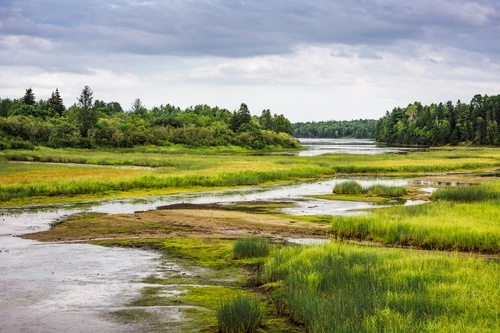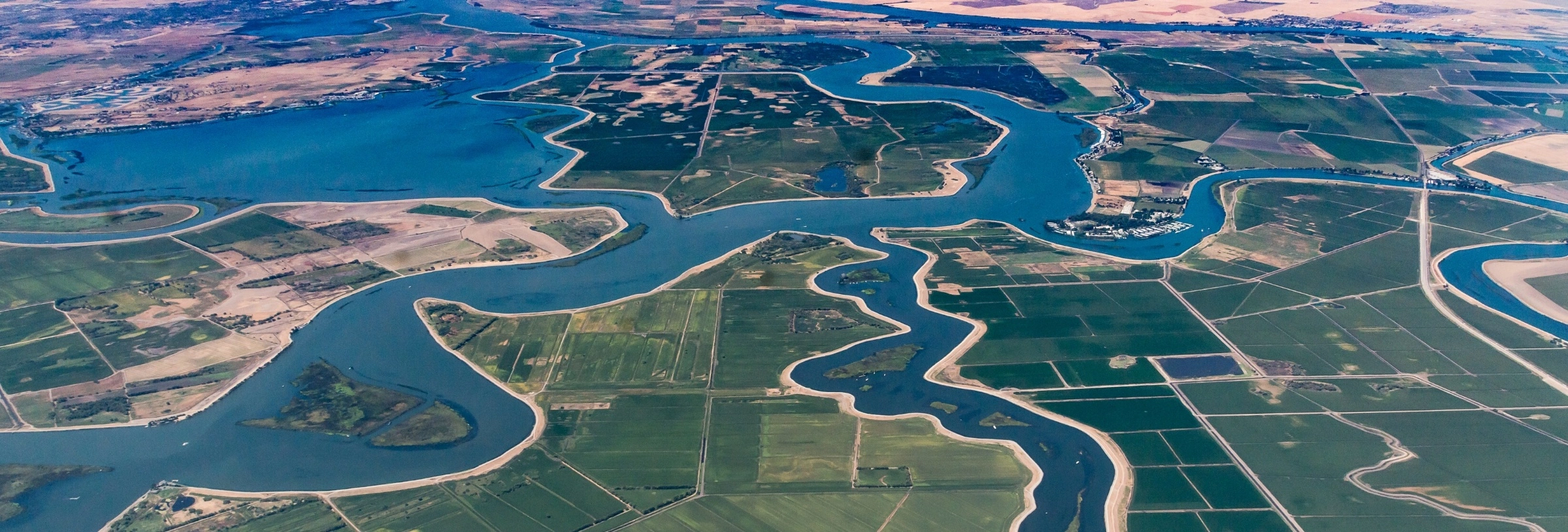
On November 18, 2021, the Environmental Protection Agency (EPA) and Army Corps of Engineers (Corps) announced the availability of a pre-publication version of a proposed rule (Proposed Rule) to amend the definition of Waters of the United States (WOTUS). This much anticipated rulemaking is the latest attempt by the agencies to provide regulatory clarity on what water features are subject to the protections of the Clean Water Act.
The agencies did not announce a date for official Federal Register publication, but once published, the Proposed Rule will have a 60-day comment period. The Proposed Rule announces three virtual hearings on January 12, 13, and 18 and provides links for registration. The last day to pre-register to speak at the sessions will be, respectively, Friday, January 7, 2022; Monday, January 10, 2022; and Thursday, January 13, 2022 (links to register for each session are provided in the Proposed Rule). The agencies are also contemplating additional changes through a second rulemaking, which would build upon the Proposed Rule. It was expected that this first rulemaking would simply be a repeal rule. However, the Proposed Rule goes further than a repeal and proposes to codify both the pre-2015 regulation and the agencies’ current interpretation of their previously issued guidance arising from the Supreme Court’s decisions in Rapanos v. United States and SWANCC v. U.S. Army Corps of Engineers.
Background
The definition set forth in the Proposed Rule would restore the approach taken by the Corps and EPA prior to the definition of WOTUS promulgated on June 29, 2015 under the Obama Administration (2015 WOTUS Rule), which was repealed by the Trump Administration on October 22, 2019 (Repeal Rule). The Repeal Rule effectuated a return to the definition of WOTUS as it existed prior to the 2015 WOTUS Rule (Pre-2015 Approach), which remained in place until the agencies promulgated a new definition pursuant to the Navigable Waters Protection Rule, which was published on April 21, 2020 (NWPR).
The agencies ceased implementing the NWPR after the U.S. District Court for the District of Arizona vacated the NWPR on August 30, 2021 in connection with the agencies’ request that the court voluntary remand the NWPR to the agencies. Since then, the Corps has since been applying the Pre-2015 Approach to determining WOTUS based on the 1986 regulatory definition and guidance established pursuant to the Supreme Court’s Rapanos and SWANCC guidance. In the Proposed Rule, the agencies propose an interpretation of WOTUS that relies on the 1986 regulations, but with refinements to reflect the agencies’ interpretation of the statutory limits on the scope of the “waters of the United States” informed by Supreme Court decisions and the scientific record. Publication of a new definition of WOTUS has been hotly anticipated, and the agencies have been engaging with stakeholders since this past summer. EPA and the Corps previously have stated their desire to adopt a “durable” WOTUS definition “based on Supreme Court precedent and drawing from the lessons learned from the current and previous regulations” that will “better protect our nation’s waters, foster economic growth, and support thriving communities.”
Justification for Proposed Definition
In explaining the approach taken by the Proposed Rule, the agencies acknowledge the importance of ensuring the definition is easy to administer. The preamble to the Proposed Rule acknowledges that the “absolute position” taken by the NWPR may have been easier to administer, but explains that the proposed definition is more consistent with Clean Water Act objectives. The agencies also cite to the Biden Administration’s climate change and environmental justice priorities as providing justification for the definition proposed, noting that the NWPR did not appropriately account for climate change and that it had disproportionate impacts on tribes and indigenous communities. Additionally, the agencies emphasize that a return to the pre-2015 approach would provide a known and familiar framework for regulators and the regulated community. Finally, the agencies devote a portion of the preamble to identifying technology, databases, and other resources that can be relied upon to help implement the proposed definition of WOTUS.
What is a WOTUS under the Proposed Rule?
As has been anticipated, waters that were not jurisdictional under the NWPR (ephemeral streams, adjacent wetlands, ditches), may be jurisdictional under the proposed definition.
The Proposed Rule defines WOTUS to include:
- Traditional navigable waters, interstate waters, and the territorial seas, and their adjacent wetlands;
- Most impoundments of “waters of the United States”;
- Tributaries to traditional navigable waters, interstate waters, the territorial seas, and impoundments that meet either the relatively permanent standard or the significant nexus standard;
- Wetlands adjacent to impoundments and tributaries, that meet either the relatively permanent standard or the significant nexus standard; and
- “Other waters” that meet either the relatively permanent standard or the significant nexus standard.
The Proposed Rule pivots away from the NWPR’s structure, which created four categories of WOTUS and established a presumption that waters not in those categories were not WOTUS. Instead, the Proposed Rule seeks to codify aspects of Rapanos guidance and makes jurisdictional those waters that fall into one of the above categories and meet one of the following two standards: the “relatively permanent standard” or the “significant nexus standard.”
The agencies interpret the “relatively permanent standard” to mean waters that are “relatively permanent, standing or continuously flowing and waters with a continuous surface connection to such waters.” In determining whether a water is “relatively permanent,” the Proposed Rule abandons the “typical year” concept introduced in the NWPR and instead focuses on seasonality. For example, when considering whether or not a tributary may be relatively permanent, the agencies propose to look at whether the tributary flows year-round or has continuous flow at least seasonally. Seasonality will vary by location, climate, hydrology, topography, soils, and other conditions.
The Proposed Rule describes the “significant nexus standard” to mean waters that “either alone or in combination with similarly situated waters in the region, significantly affect the chemical, physical, or biological integrity of traditional navigable waters, interstate waters, or the territorial seas.” The term “significant affect” is proposed as “more than speculative or insubstantial effects on the chemical, physical, or biological integrity of waters” taking into account several factors.
Ultimately, if the Proposed Rule is finalized, the result will be that features such as ditches, adjacent wetlands, and ephemeral streams – all features that had largely been non-jurisdictional under the NWPR – will be subjected to these two standards and potentially jurisdictional.
Notably, the Proposed Rule retains two long-standing WOTUS exclusions: Prior Converted Croplands (PCC) and Waste Treatment Systems. With respect to PCC, the agencies propose to restore treatment of PCC to the pre-2015 regulatory regime and generally maintain consistency between the agencies’ implementation of the Clean Water Act and the U.S. Department of Agriculture’s (USDA) implementation of the Food Security Act. Notably, however, the agencies discuss and solicit comment on alternative approaches to administering the PCC exclusion, including whether to retain some of the more expansive concepts introduced in the NWPR to allow for PCC designations to be retained even where agricultural lands have been idled for conservation purposes (habitat, pollinator plantings, etc.). The agencies propose to return the waste treatment system to the longstanding version of the exclusion that the agencies have implemented since the mid-1980s.
What’s Next?
The announcement of the Proposed Rule confirms predictions that the narrow reach of the NWPR would be set aside. As noted above, EPA and the Corps have been emphatic that they want any replacement to be durable and easily administered. However, as WOTUS practitioners and project proponents are painfully aware, despite technological advancements and an increase in available databases that allow for improved data-gathering and analyses, a return to the pre-2015 standard for WOTUS is likely to result in time-consuming and subjective case-by-case analyses.
The publication of the Proposed Rule will begin a 60-day public comment period, which will no doubt draw thousands of comments. For the agencies to achieve a definition that can withstand a legal challenge, those comments must be carefully addressed. Even then, inevitably any final rule will end up subject to multiple court challenges, the outcome of which is by no means certain.
Until an amendment to the WOTUS definition is finalized, the Corps will continue its interim approach to permitting by relying on the pre-2015 approach for administering the Clean Water Act. Given the Proposed Rule seeks to codify the agencies’ interpretation of the pre-2015 approach, concepts and clarifications set forth in the Proposed Rule may bleed into analyses during this interim time.
- Partner
Brooke Marcus is a natural resources lawyer focused on assisting the renewable energy sector with maintaining compliance with environmental laws. She is go-to counsel for matters involving the Endangered Species Act (ESA), the ...
- Partner
Rebecca Hays Barho focuses her practice on natural resource law, with particular emphasis on the Endangered Species Act (ESA), the National Environmental Policy Act (NEPA), the Migratory Bird Treaty Act (MBTA), the Clean Water Act ...
- Partner
Mary Lynn Coffee has extensive experience providing legal and regulatory advice and counsel with respect to complying with and permitting under CEQA, NEPA and state and federal water quality, wetlands, endangered species and ...
California Water Views provides timely and insightful updates on the water sector in the state. We relay information on how water legislation and policy from the nation’s capital, Sacramento, and around the U.S. affect California’s water utilities, agencies, practitioners, and consumers. We also write about important events, conferences, legal cases, and other key happenings involving all things water in and around California.
Stay Connected
 RSS Feed
RSS Feed
Categories
- Clean Up of Groundwater & Contaminated Media
- Climate Change
- Coastal Development
- Construction
- COVID-19
- Dam Construction, Operation & Removal
- Desalination
- Environmental Protection Agency
- Events
- Government Administration
- Groundwater Management & SGMA
- Inverse Condemnation & Regulatory Takings
- New Legislation
- Oceans, Marine Life & Maritime Transportation
- Project Construction
- Projects
- Public Agency Regulation
- Recycled Water
- Regulatory Reform & Proposed Rules
- Right to Take
- Valuation
- Water Infrastructure
- Water Litigation
- Water Quality
- Water Rights
- Water Supply
- Water Utility Regulation



